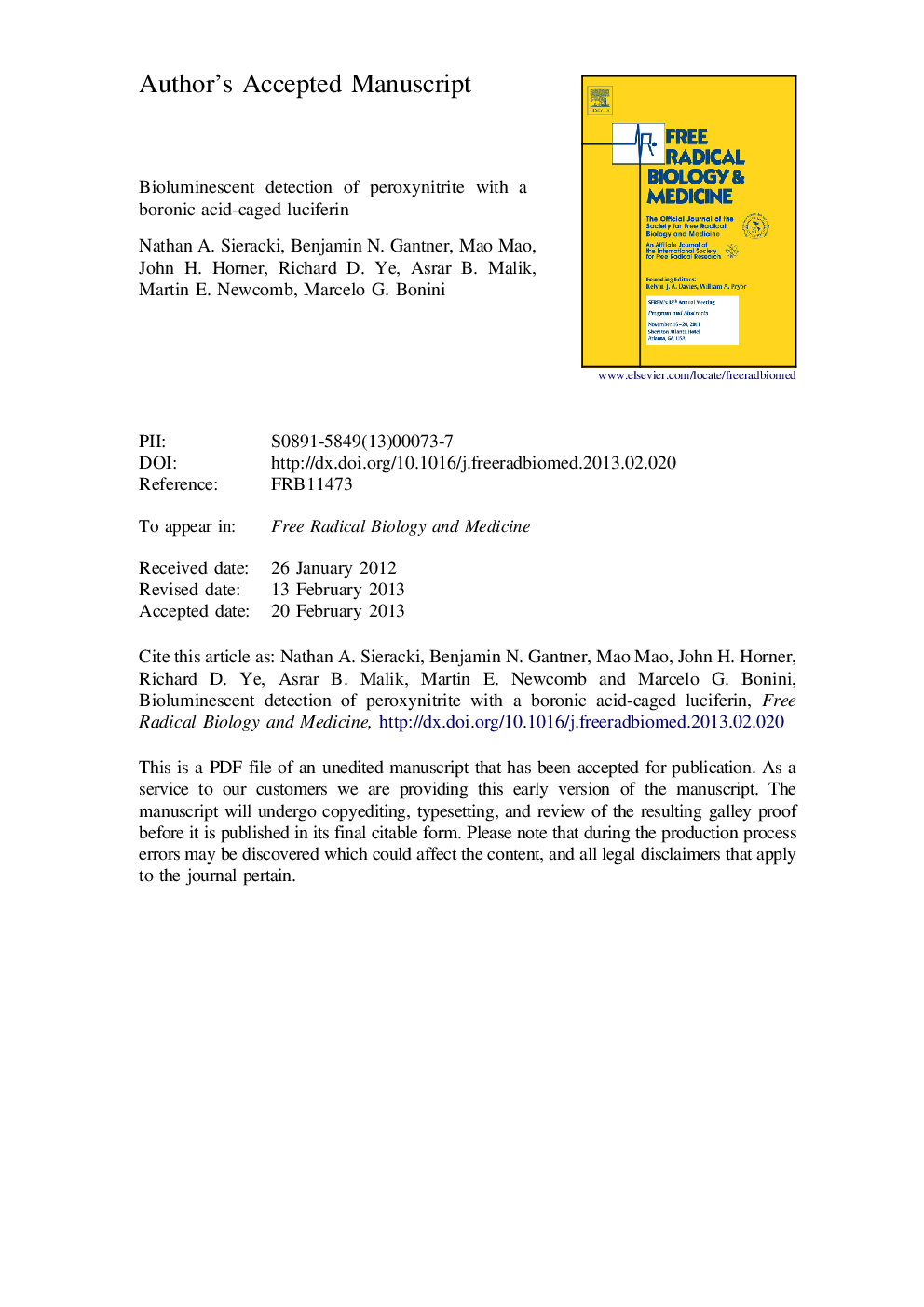| Article ID | Journal | Published Year | Pages | File Type |
|---|---|---|---|---|
| 8271142 | Free Radical Biology and Medicine | 2013 | 31 Pages |
Abstract
Peroxynitrite, a highly reactive biological oxidant, is formed under pathophysiologic conditions from the diffusion-limited reaction of nitric oxide and superoxide radical anion. Peroxynitrite has been implicated as the mediator of nitric oxide toxicity in many diseases and as an important signaling disrupting molecule (L. Liaudet et al., Front. Biosci.14, 4809-4814, 2009) [1]. Biosensors effective at capturing peroxynitrite in a specific and fast enough manner for detection, along with readouts compatible with in vivo studies, are lacking. Here we report that the boronic acid-based bioluminescent system PCL-1 (peroxy-caged luciferin-1), previously reported as a chemoselective sensor for hydrogen peroxide (G.C. Van de Bittner et al., Proc. Natl. Acad. Sci. USA107, 21316-21321, 2010) [2], reacts with peroxynitrite stoichiometrically with a rate constant of 9.8±0.3Ã105 Mâ1 sâ1 and a bioluminescence detection limit of 16 nM, compared to values of 1.2±0.3 Mâ1 sâ1 and 231 nM for hydrogen peroxide. Further, we demonstrate bioluminescent detection of peroxynitrite in the presence of physiological competitors: carbon dioxide, glutathione, albumin, and catalase. We also demonstrate the utility of this method to assess peroxynitrite formation in mammalian cells by measuring peroxynitrite generated under normal culture conditions after stimulation of macrophages with bacterial endotoxin lipopolysaccharide. Thus, the PCL-1 method for measuring peroxynitrite generation shows superior selectivity over other oxidants under in vivo conditions.
Related Topics
Life Sciences
Biochemistry, Genetics and Molecular Biology
Ageing
Authors
Nathan A. Sieracki, Benjamin N. Gantner, Mao Mao, John H. Horner, Richard D. Ye, Asrar B. Malik, Martin E. Newcomb, Marcelo G. Bonini,
